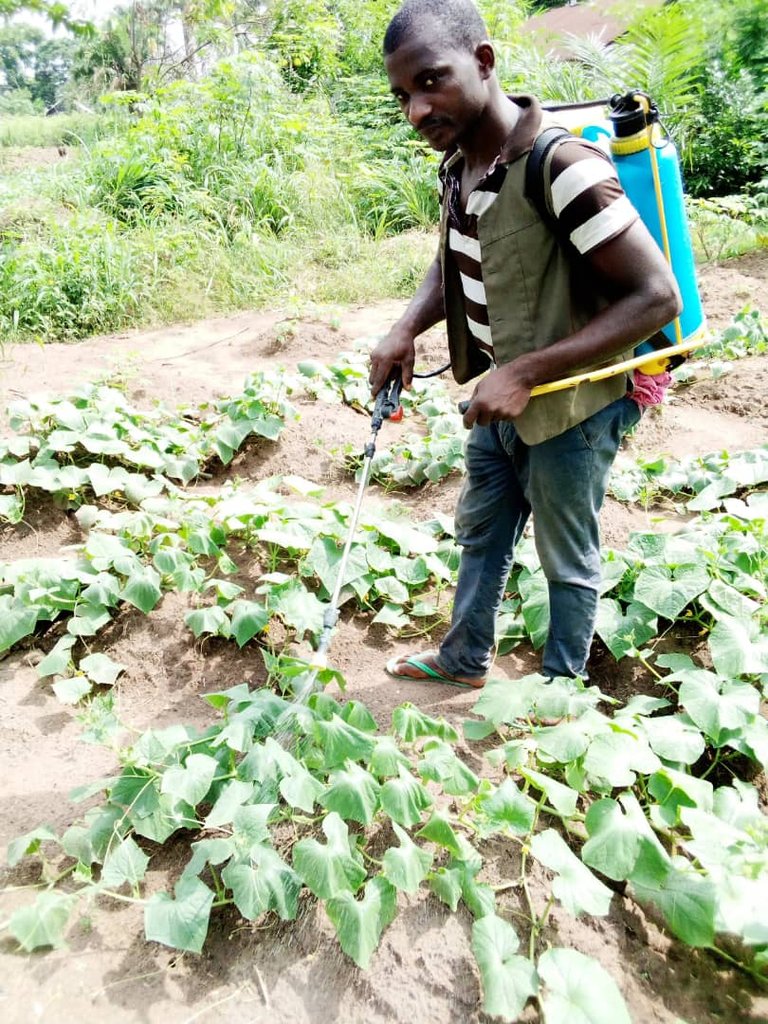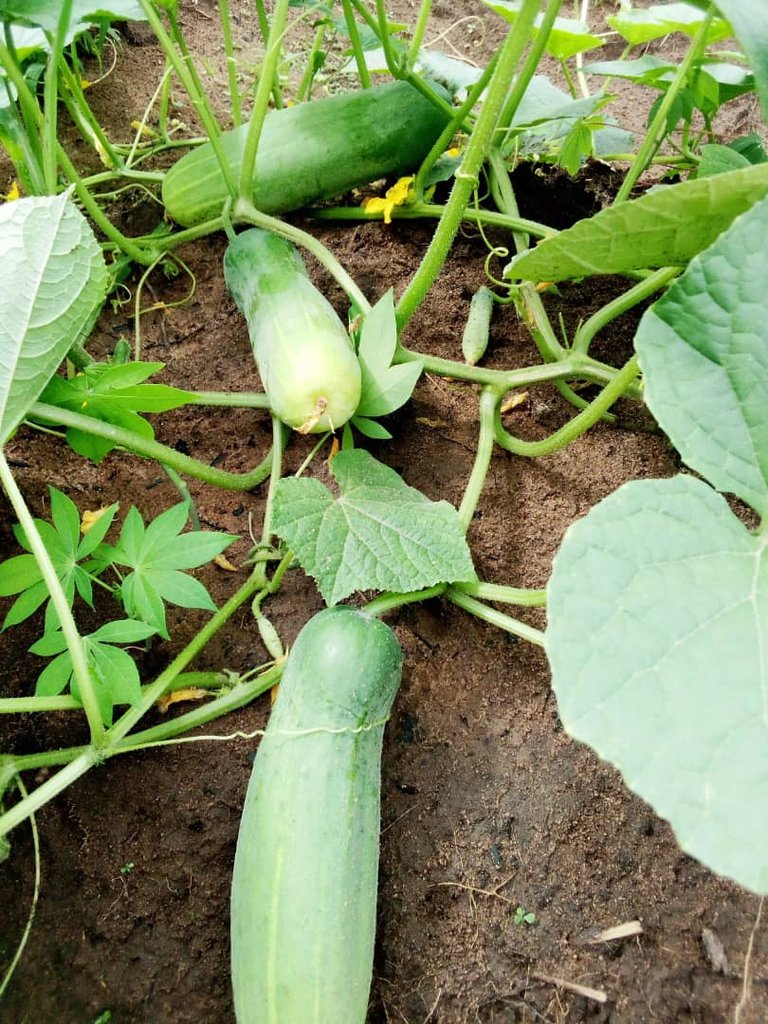Green Gold: Harnessing Prosperity Through Cucumber Farming
Good evening my people of hive community, I hope you all are doing good. I am back this evening to share my knowledge on Cucumber Farming. It's of great important for you to read till the end of this article for you to understand how to do cucumber farming.

Cucumbers are not only a popular addition to salads but also a rewarding crop to cultivate. Whether you're a seasoned farmer or a beginner looking to try your hand at agriculture, cucumber farming can be a fulfilling venture. Here's a comprehensive guide to help you get started:
1. Choose the Right Variety:
Select a cucumber variety that suits your climate and purpose. Common types include slicing cucumbers, pickling cucumbers, and specialty varieties. Ensure the chosen variety is well-suited for your region's soil and climate conditions.

2. Prepare the Soil:
Cucumbers thrive in well-drained, fertile soil with a slightly acidic to neutral pH. Conduct a soil test to determine its composition and make necessary amendments. Incorporate organic matter, like compost, to improve soil structure and nutrient content.
3. Planting:
Plant cucumber seeds directly in the soil or start with seedlings. Sow seeds about 1 inch deep and 2-3 feet apart, allowing ample space for the vines to spread. Ensure the soil temperature is at least 60°F (15°C) for optimal germination.
4. Sunlight and Watering:
Cucumbers love sunlight, so choose a location that receives at least 6-8 hours of direct sunlight daily. Provide consistent watering, keeping the soil consistently moist but not waterlogged. Mulching around the plants helps retain moisture and suppress weeds.

5. Trellising for Support:
Consider using trellises or stakes to support cucumber vines. This not only saves space but also improves air circulation, reducing the risk of diseases. Train the vines to climb the trellis for healthier growth and easier harvesting.
6. Fertilization:
Cucumbers are heavy feeders, so ensure they receive regular applications of a balanced fertilizer. Start with a balanced fertilizer during planting and switch to one higher in potassium when the plants begin to flower.
7. Pest and Disease Management:
Keep an eye out for common cucumber pests such as aphids, cucumber beetles, and spider mites. Implement integrated pest management strategies, including natural predators and organic pesticides. Fungal diseases can be prevented by practicing crop rotation and providing adequate air circulation.
8. Harvesting:
Harvest cucumbers when they reach the desired size and color, depending on the variety. Regular harvesting encourages more fruit production. Use sharp scissors or pruning shears to cut the cucumbers from the vine, avoiding damage to the plant.
9. Post-Harvest Handling:
Handle harvested cucumbers with care to avoid bruising. Store them in a cool, humid environment or refrigerate for longer shelf life. Proper post-harvest handling ensures the cucumbers retain their freshness and flavor.

10. Continuous Care:
After harvesting, consider replanting for a continuous harvest. Keep the area weed-free, monitor for pests and diseases, and maintain proper watering and fertilization to ensure a successful and sustainable cucumber farming venture.
By following these steps, you can embark on a successful cucumber farming journey. Whether you're cultivating cucumbers for personal consumption or commercial purposes, attention to detail and proper care will contribute to a bountiful harvest. Happy farming!
Thanks for stopping by to read my article, I hope you enjoyed it.
@tipu curate
Upvoted 👌 (Mana: 42/52) Liquid rewards.
Thanks so much.
Thanks so much sir.